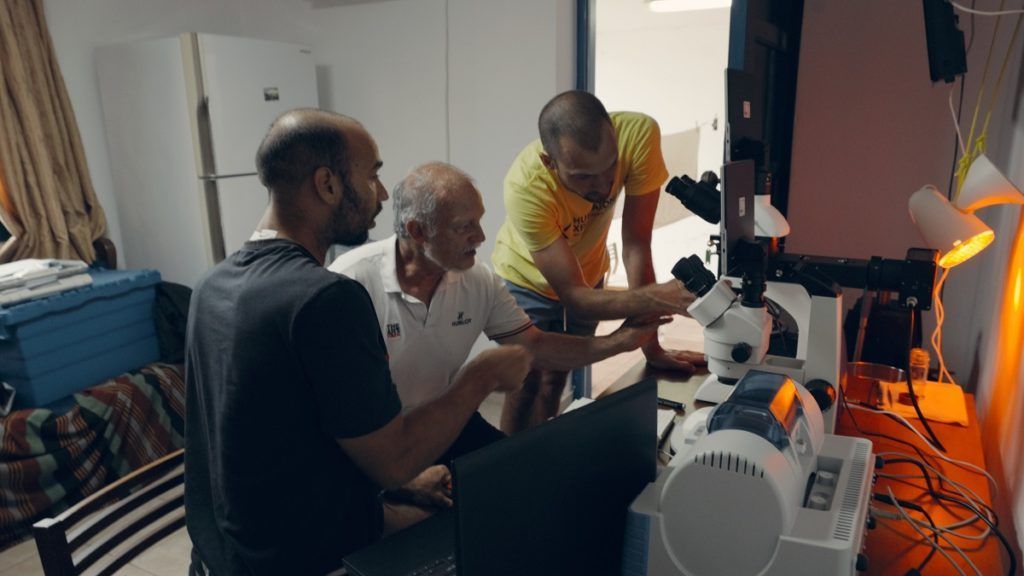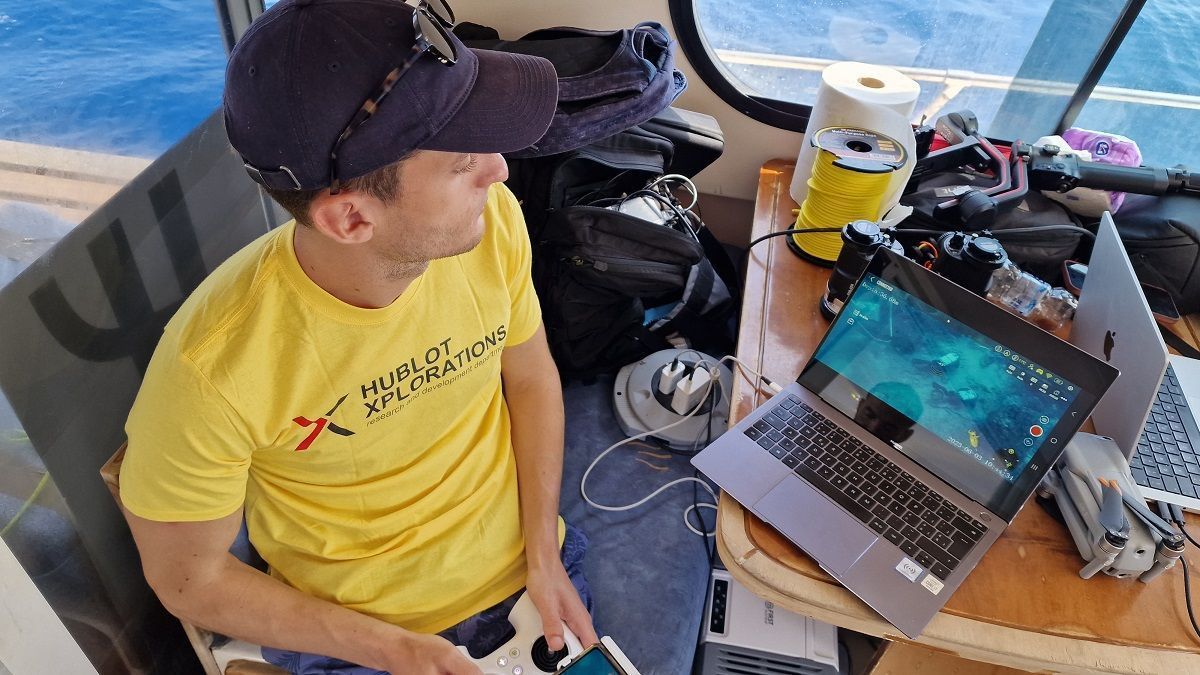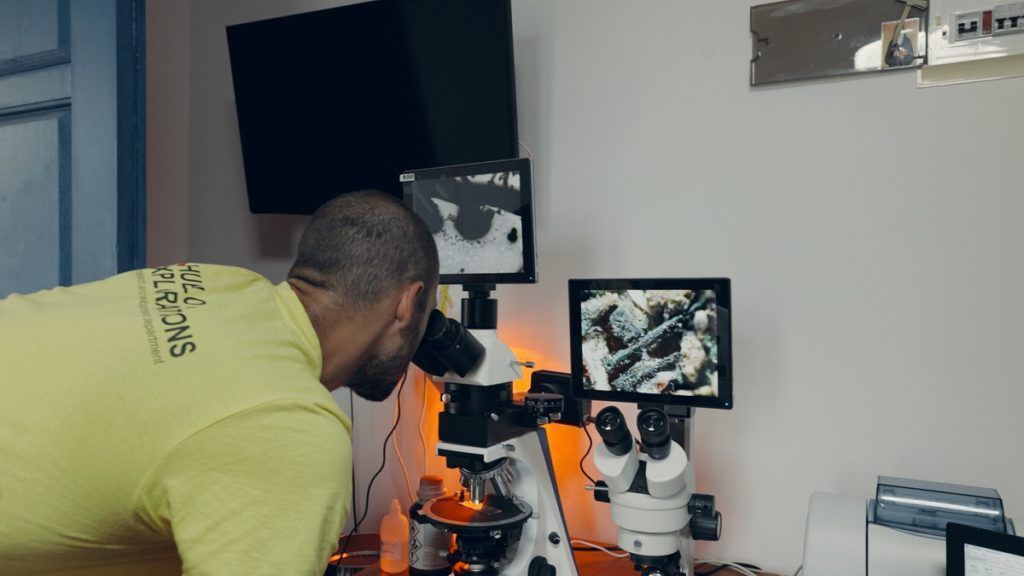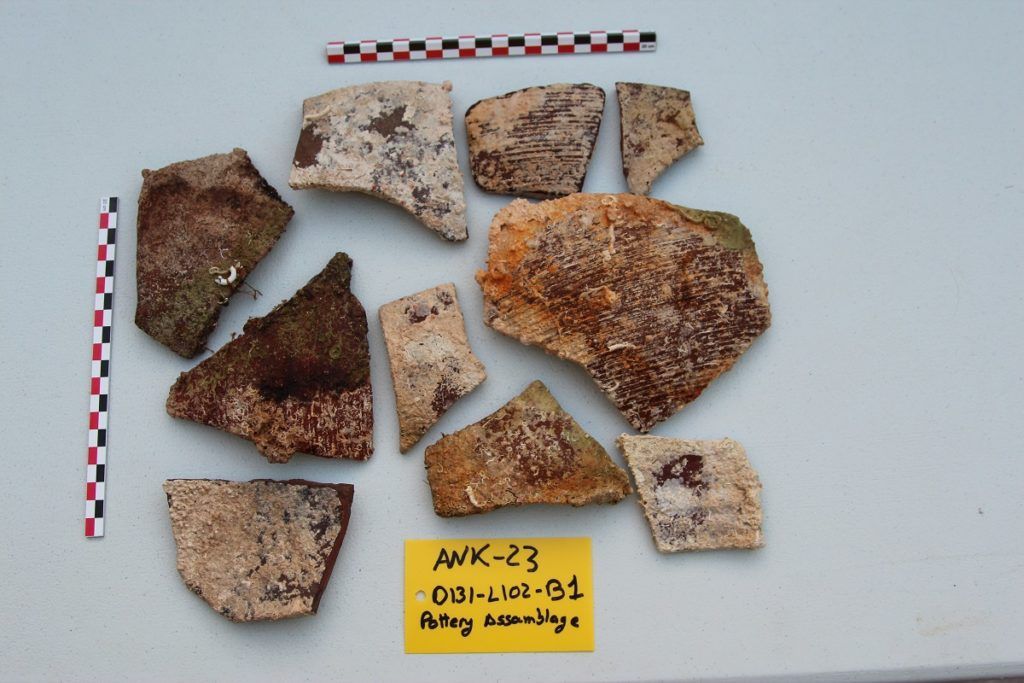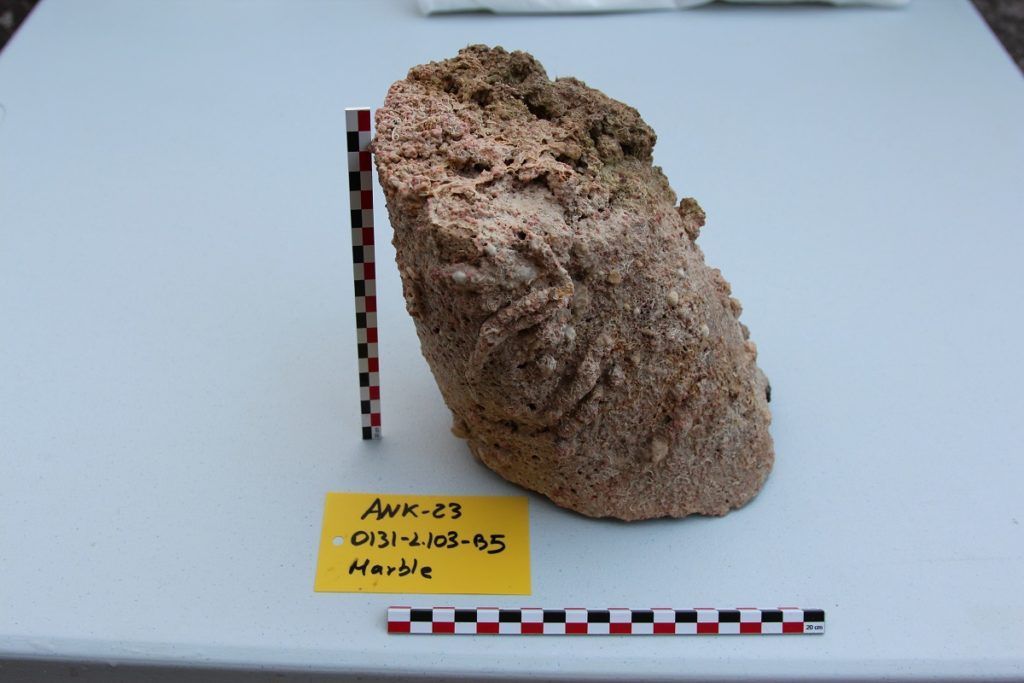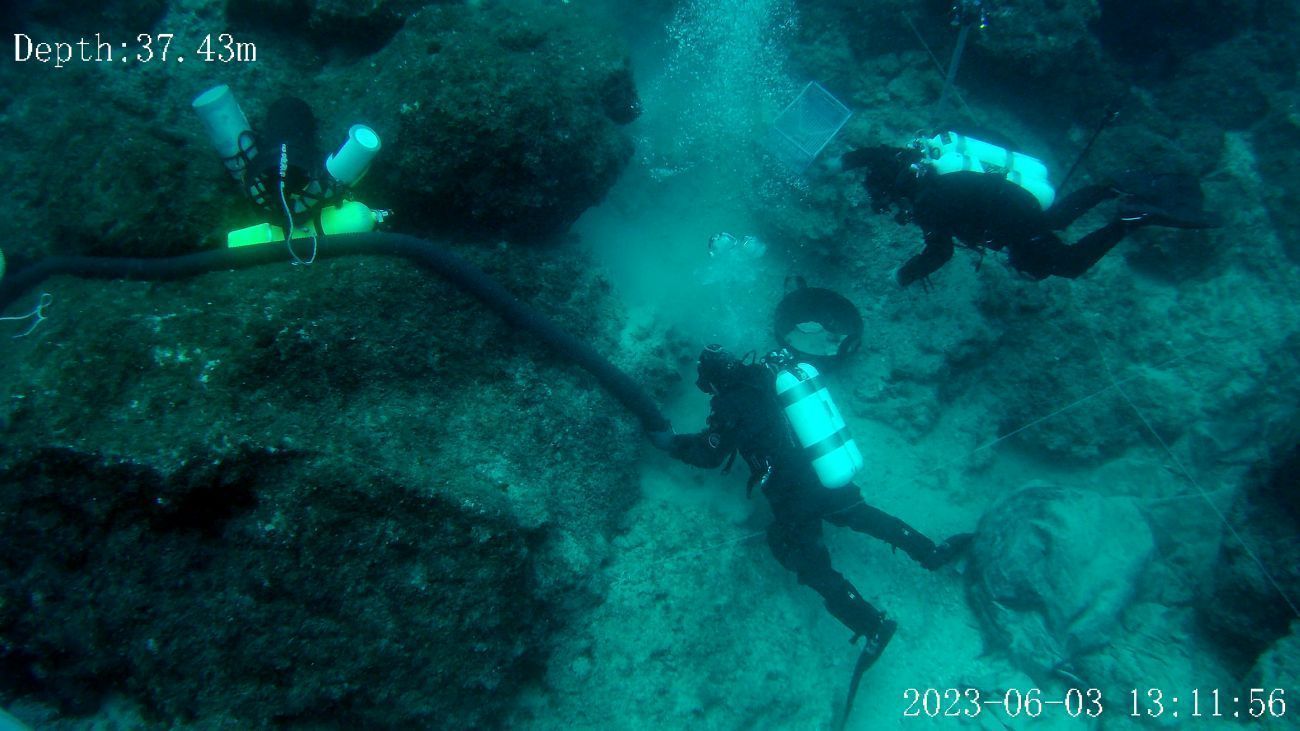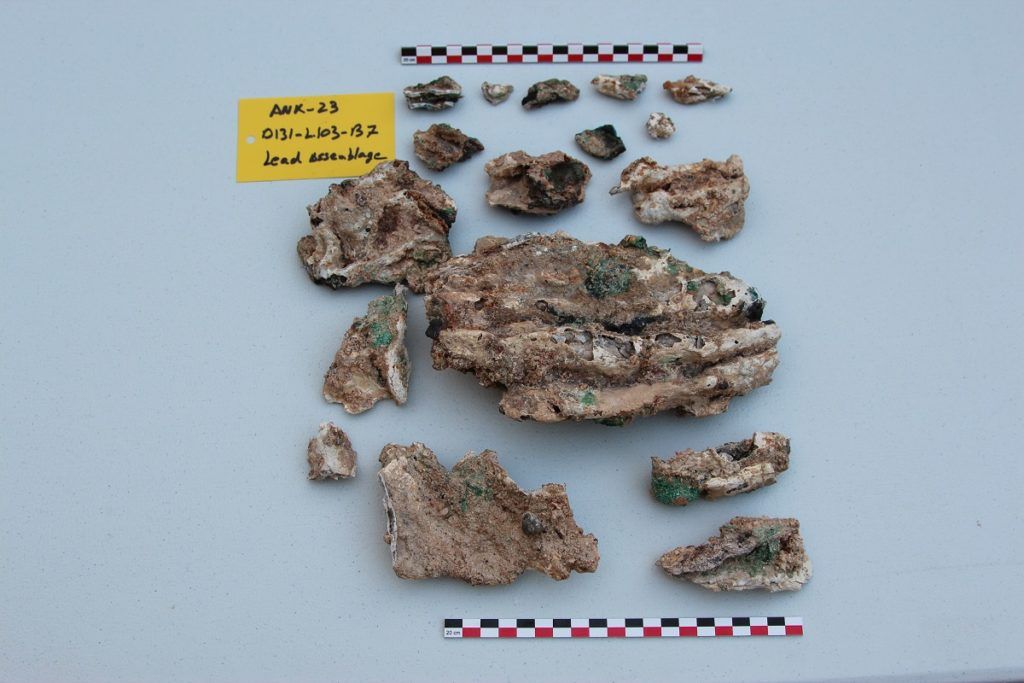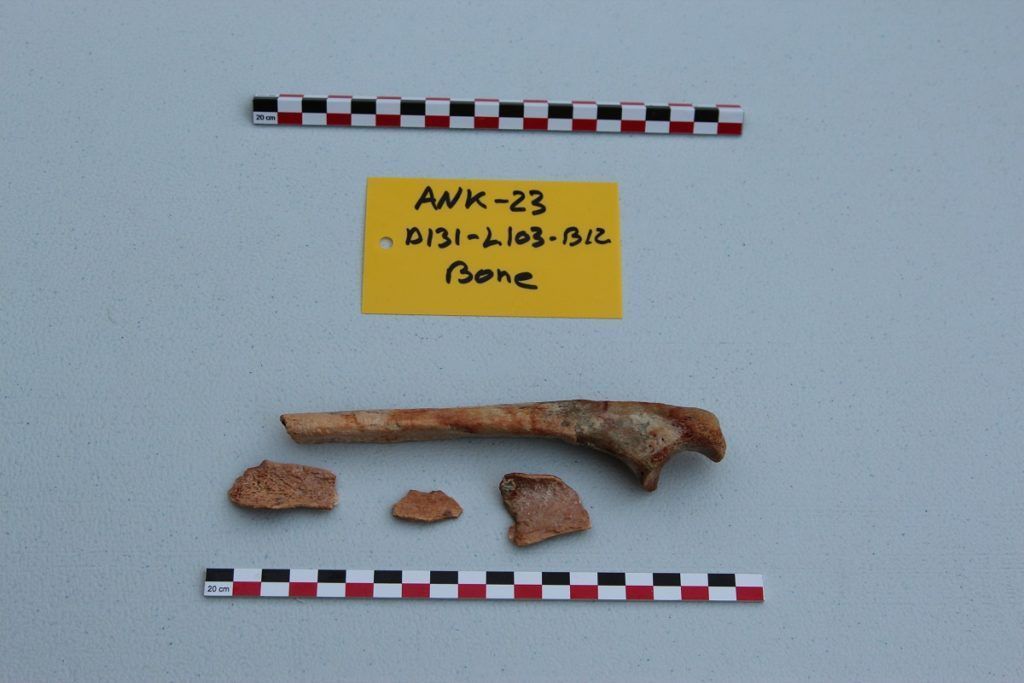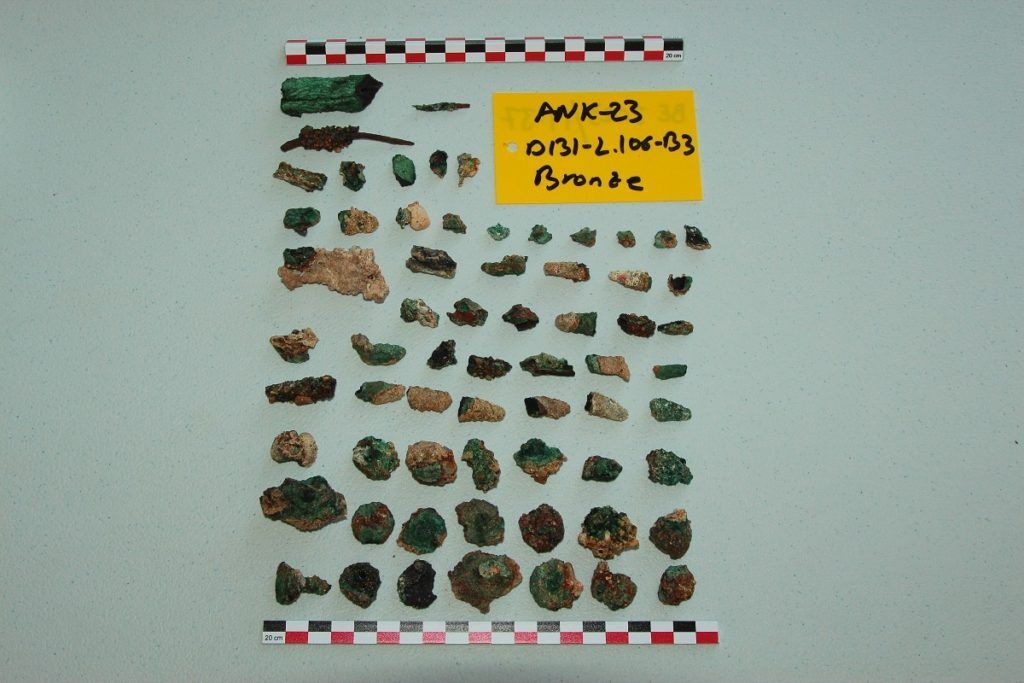Antikythera Shipwreck: New Excavation Brings Fascinating Finds to Surface
A team of Swiss and Greek archaeologists recently revealed new and fascinating finds at the Antikythera shipwreck in southeastern Peloponnese.
The latest finds include small sculpture parts, clay and glass vessels and human bones possibly belonging to the shipwreck’s castaways.
This year’s excavations at the Antikythera shipwreck took place during May and June and also uncovered some early Byzantine vase fragments the existence of which puzzled scientists, reinforcing the belief that this maritime area was a ship route throughout the centuries.
- The field laboratory (Isaac Ogloblin, Michel Blumenthal and Aloïs Aebischer) Photo source: Diego Carve/ Hublot.
- -Steering of an underwater drone (Guillaume Champain).
- The field laboratory (Isaac Ogloblin) Photo source: Diego Carven/ Hublot.
This year’s research at the site resulted in significant advancements in understanding the site’s structure, stratigraphy, the wreck itself, and its cargo. Additionally, previously unexplored areas were thoroughly documented, providing a clearer and more precise understanding of the renowned vessel.
The team of international archaeologists, divers, engineers, and scientists, led by Dr. Angeliki G. Simosi, Head of the Ephorate of Antiquities of Piraeus and the Islands, and Professor Lorenz Baumer from the University of Geneva employed cutting-edge technologies like remote-controlled drones and digital capture to document this phase of the excavation.
- Fragments of late ceramics. Photo source: Orestes Manousos/Culture Ministry.
- Thigh of a marble statue. Photo source: Orestes Manousos/Culture Ministry.
- Marble fragment of the beard of the Herakles statue .Photo source: Orestes Manousos/Culture Ministry.
The data collected was processed on a daily basis with 3D modeling software, allowing the creation of a visual anapysis of the site.
Furthermore, all archaeological findings were documented and integrated into a Geographic Information System (GIS), facilitating an understanding of their spatial distribution, while the database created now includes all known data on the Antikythera wreck, dating back to the first excavations in 1900-1901.
The Antikythera shipwreck
The Antikythera shipwreck is located off the coast of the Greek island of Antikythera, in the Aegean Sea. It is thought to have sunk in the first half of the first century BC, during a storm. The ship was carrying a cargo of luxury goods, including the Antikythera Mechanism, an ancient astronomical computer.
The shipwreck is considered one of the most important archaeological sites in the world, as it provides a wealth of information about ancient Greek technology and culture. The artifacts that have been recovered from the site offer insights into the lives of the people who sailed on the ship, the goods that they were transporting, and the technology that was available to them at the time.
- Lead assemblage of the ship's hull. Photo source: Orestes Manousos/Culture Ministry.
- Human bones. Photo source: Orestes Manousos/Culture Ministry.
- Bronze fragments. Photo source: Orestes Manousos/Culture Ministry.
Archaeologists are continuing to excavate the Antikythera shipwreck and since 2021 the project is coordinated by the University of Geneva in collaboration with the Swiss School of Archaeology in Greece.
Previous findings at the site include the head belonging to the headless statue of Hercules currently housed at the National Archaeological Museum; a bronze disk, a bronze arm and a sarcophagus lid; four fragments of marble statues and a gold ring; and pottery and wooden artefacts.


